Normally at this time of year, communities in the Central Highlands province of Gia Lai would be busy preparing for important rituals.
Of course, due to the outbreak of the novel coronavirus, large gatherings across the country have been cancelled, but that doesn't mean all parts of the rituals have to end, particularly sculpting statues.
The province'sBahnar and Jrai ethnic groups' Pơ Thi or Bỏ Mả ceremony isheld one to three years after someone dies to ask for the dead's permission to let the living move the corpse to a new tomb.
The living would then move the corpse to a permanent tomb from the temporary tomb they left the dead in after the funeral.
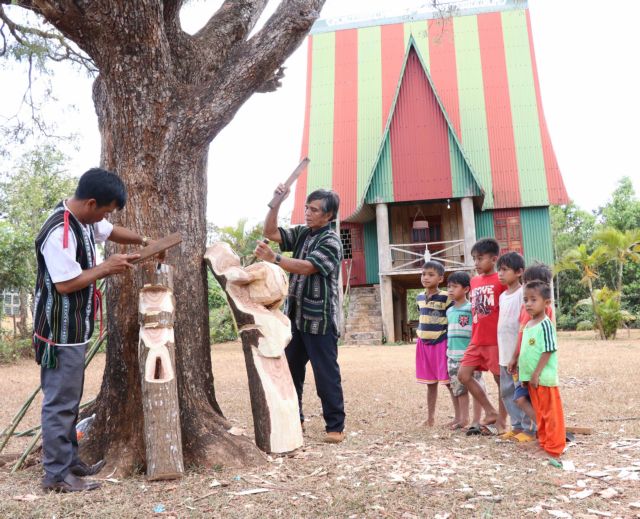 |
|
Local sculptors work on woodpreparing for the big ceremony
|
The two groups believe that after somebody dies, their soul remains wandering around and there are still connections between the living and the dead.
The living still bring food and clean the temporary tomb after the funeral. Only after one or three years, when a worship ceremony is conducted, can the corpse be moved into a permanent tomb, allowing the dead to step into a new world, completely at peace and waiting to be reborn into another life.
The community would then decorate the new tomb with wooden sculptures so the dead feel as if they are still living within the community.
According to Hoàng Thanh Hương, deputy director of Gia Lai Province’s Education Department, who has researched the sculptures of the Bahnar and Jrai ethnic groups in the province, there are two types of wood sculptures.
The first type is the sculptures put at tombs, which are only made after Bỏ Mả ceremony.
The second type is put at tourism sites, parks and communal houses for decoration.
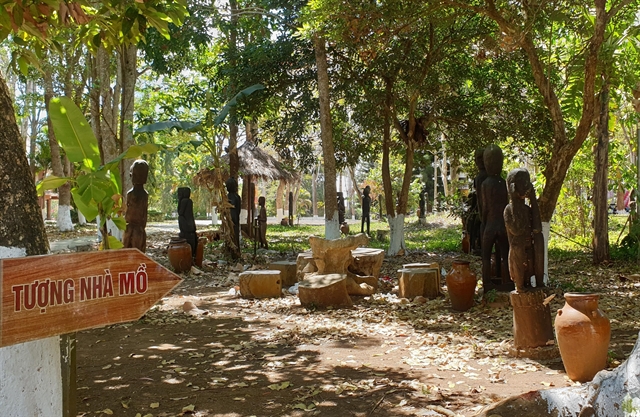 |
|
Folk sculptures put in a park in Gia Lai Province.
|
According to her survey of 177 villages in the province, there are some 1,500 wooden statues made by people from the groups.
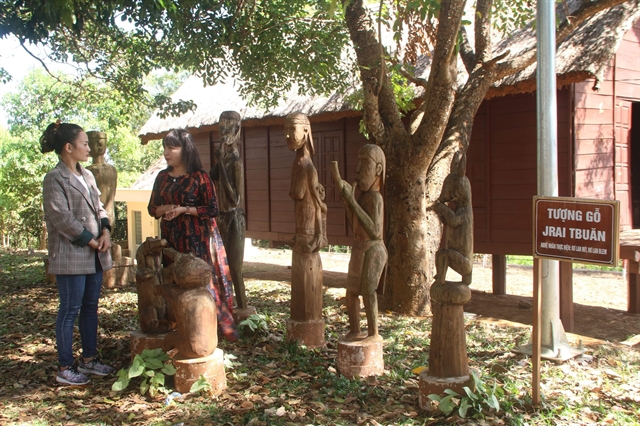 |
|
ResearcherHoàng Thanh Hương (right) introducesfolk sculptures in Ốp Village's communal house, in Pleiku City.
|
“The sculptures bear the cultural identity of the groups,” said Nguyễn Quang Tuệ, head of Culture Heritage Management Department. “Some who make the wooden sculptures have been awarded title Meritorious Artisans."
The artisans, who are mostly elderly, understand the groups’ culture thoroughly and have lots of experience.
They use only knives, hammers, chisels to cut the wood and the finished products often reflect locals’ daily lives.
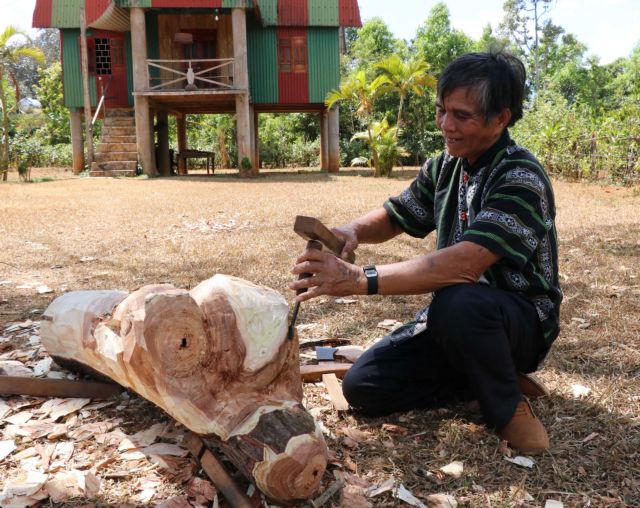 |
|
Artisan Ksor Krôh carves on a piece ofwood.
|
Meritorious Artisan Ksor Krôh, from Chư Păh District, said he first made the sculptures when he was small, following his father's footsteps.
“The handicraft has become my passion as I love my group’s culture,” he said.
He also teaches the youngsters in his village how to make the sculptures.
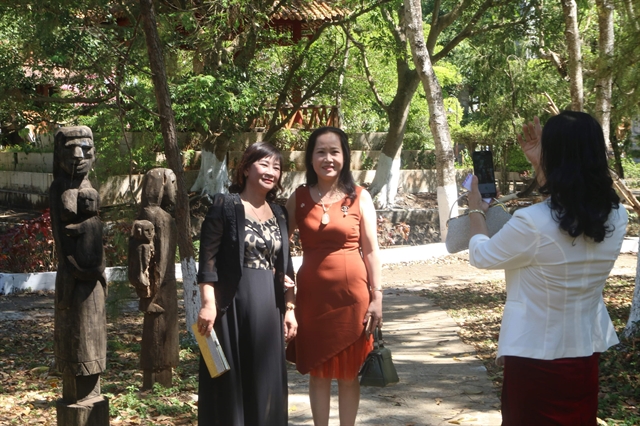 |
|
People take photos with wooden sculptures at Đồng Xanh Park, Pleiku City.
|
Artisan Ksor HNao, from Kep Village, Pleiku City in Gia Lai Province, said he has combined his group’s wooden sculpture tradition with advertising Việt Nam and Gia Lai.
He has made various sculptures to decorate his restaurant.
“Many guests like my sculptures, especially foreigners,” he said. “They have bought a lot to bring home as a souvenir from the region.”
Many restaurants in the city are decorated with sculptures.
Nguyễn Đức Hoàng, deputy director of Gia Lai Culture, Sports and Tourism Department, said the agency has encouraged localities in the province to host ethnic groups’ cultural contests, where sculptors can show off their capabilities and encourage kids to get involved.
The agency has also worked with the local Industry and Commerce Department as well as local tourism companies to produce miniature folk wooden sculptures to sell to tourists as souvenirs, he said. — VNS
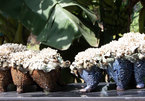
Artists promote ceramic art through their sculptures
Seven artists from the Sai Gon Ceramic Arts Group are showing 170 ceramic sculptures depicting life, people and love in at the HCM City Fine Arts Museum.
 The province's Bahnar and Jrai ethnic groups' Pơ Thi or Bỏ Mả ceremony is held one to three years after someone dies to ask for the dead's permission to let the living move the corpse to a new tomb." itemprop="description" />
The province's Bahnar and Jrai ethnic groups' Pơ Thi or Bỏ Mả ceremony is held one to three years after someone dies to ask for the dead's permission to let the living move the corpse to a new tomb." itemprop="description" />